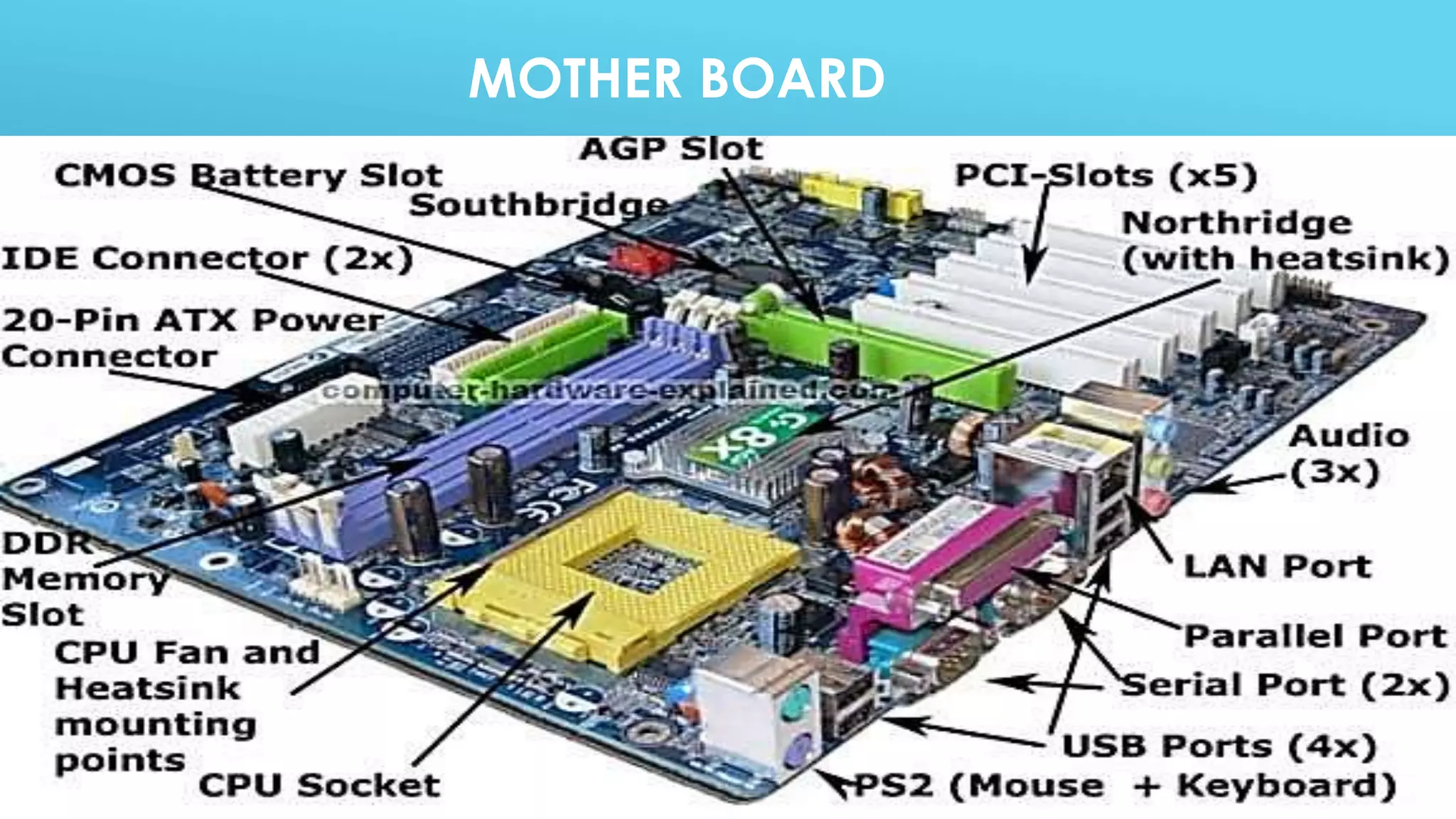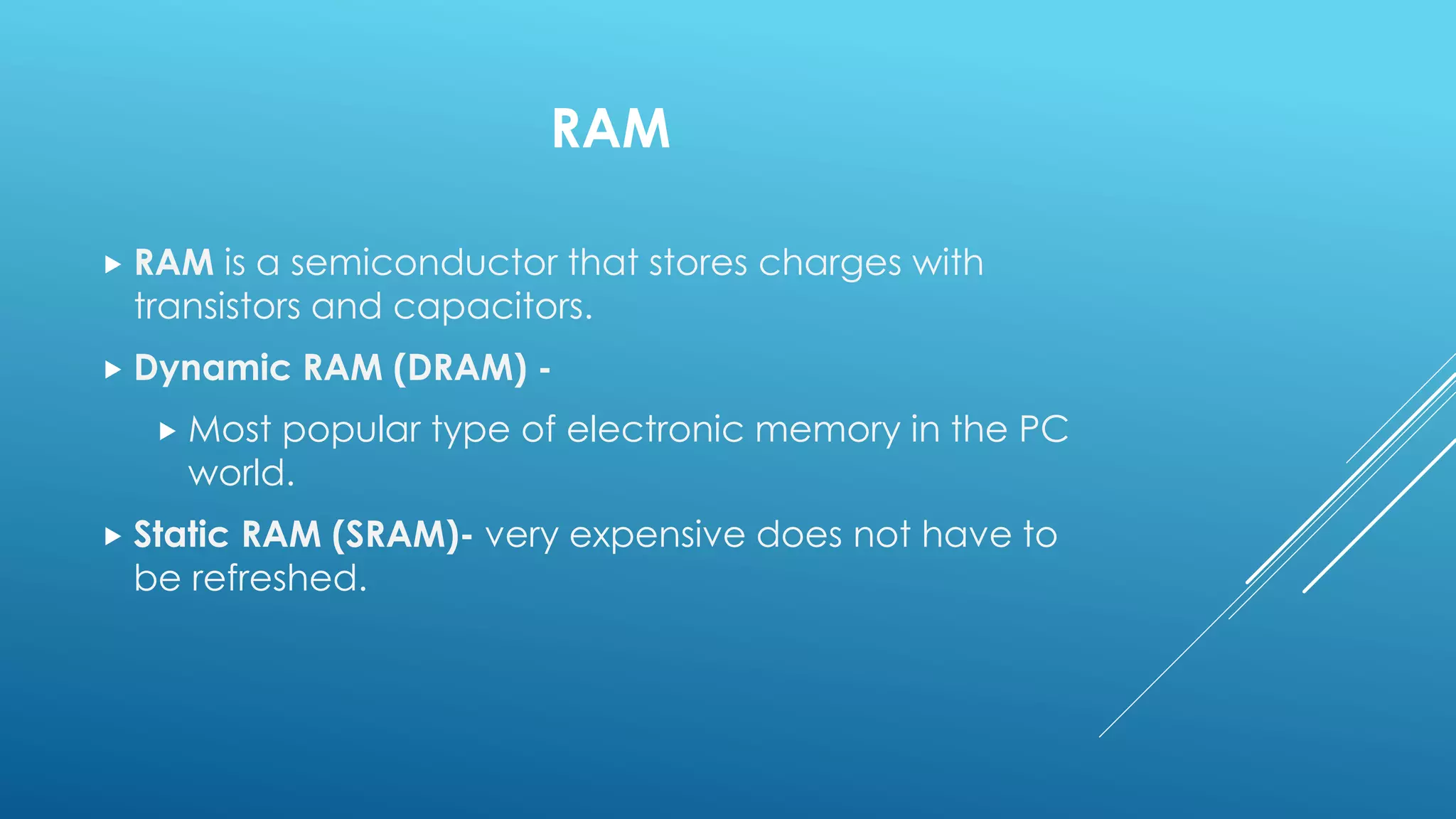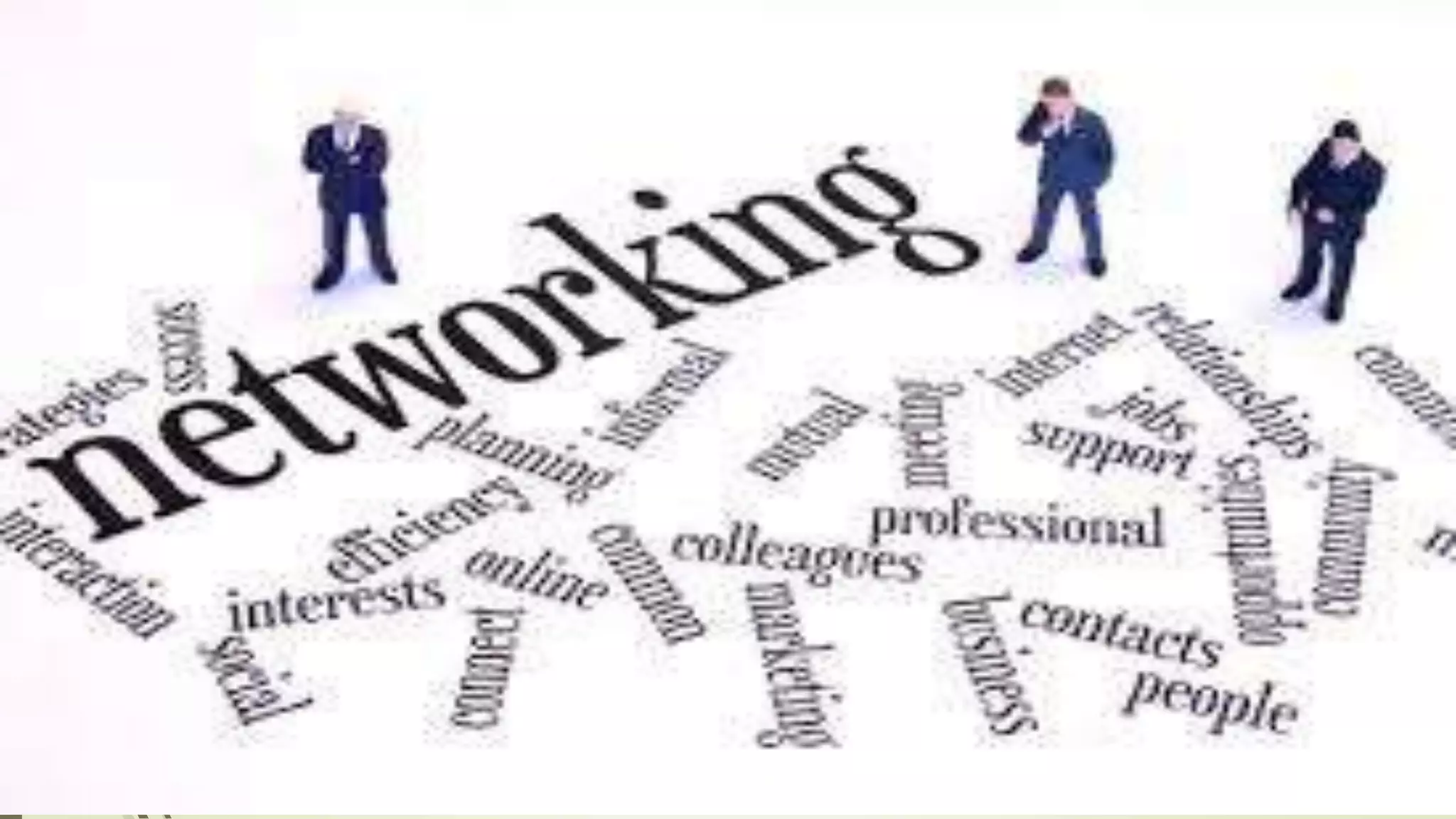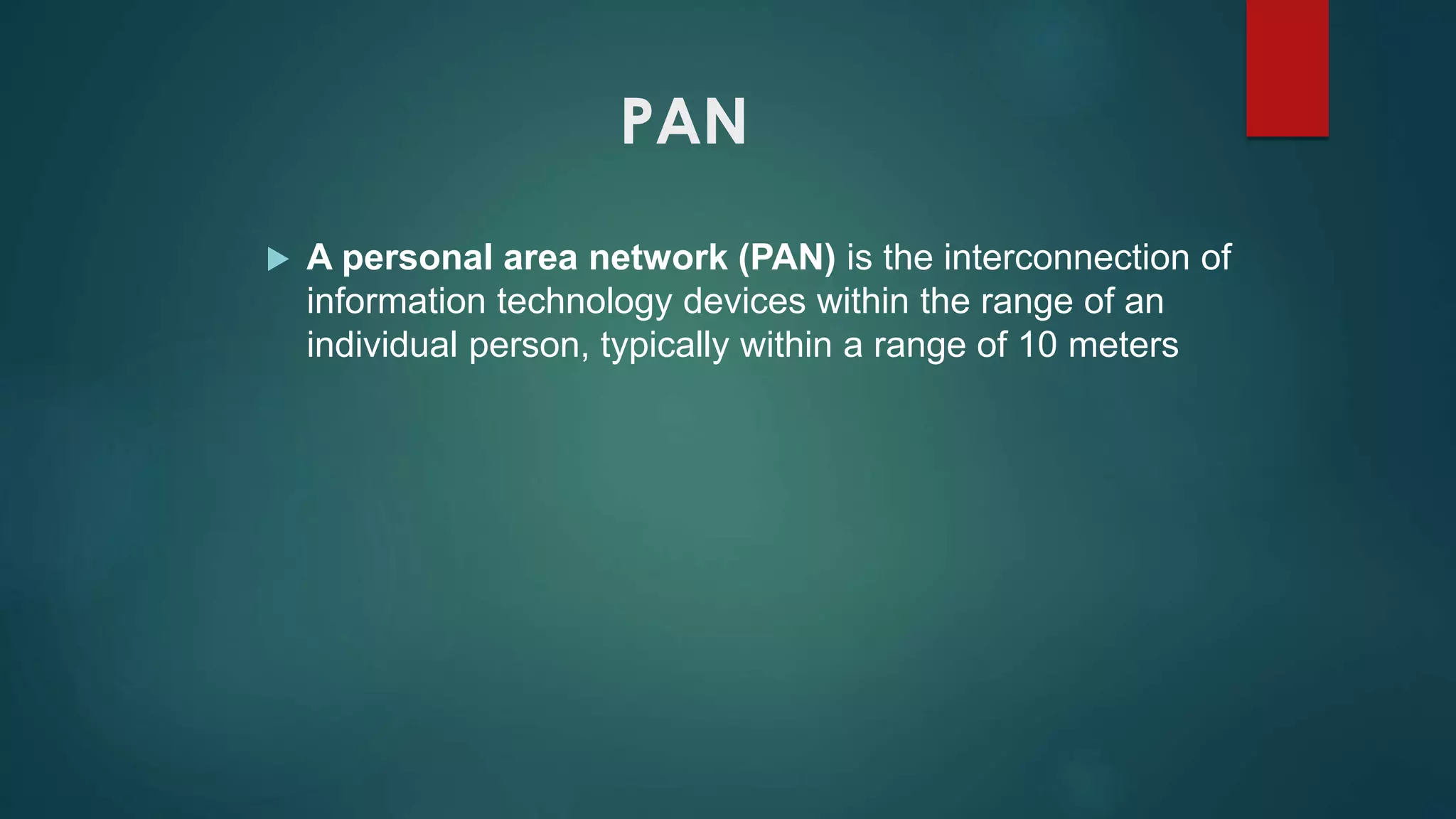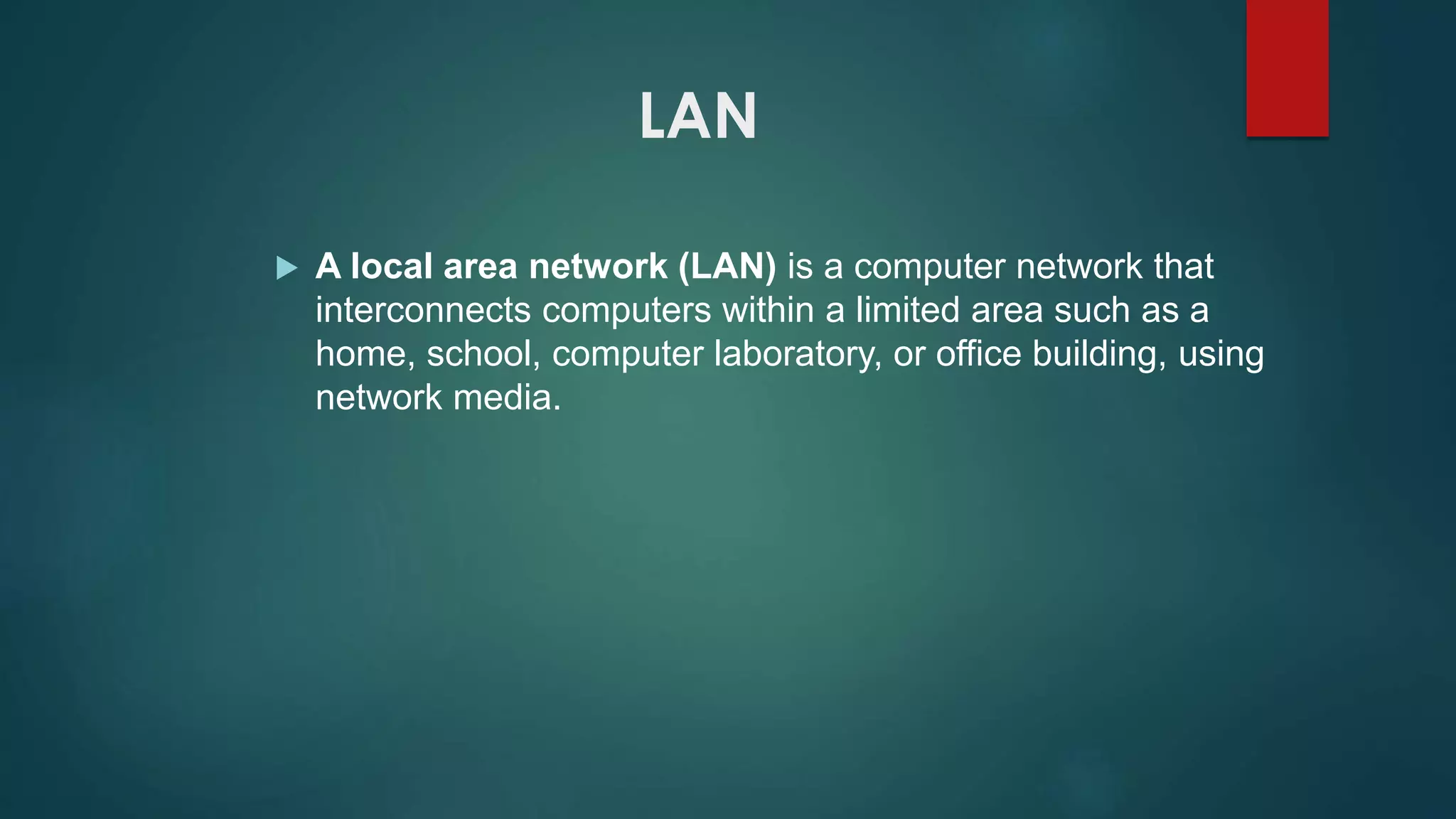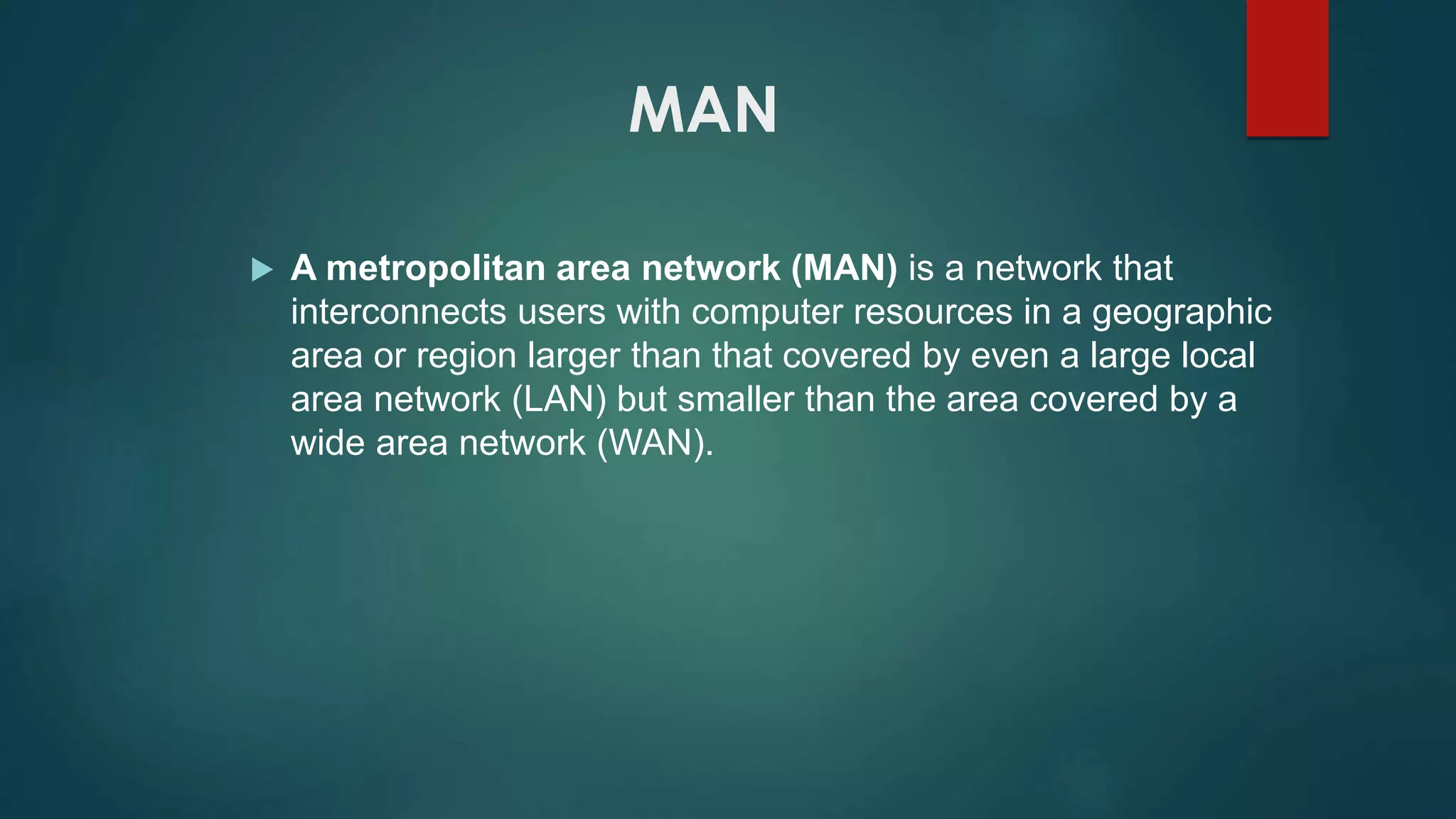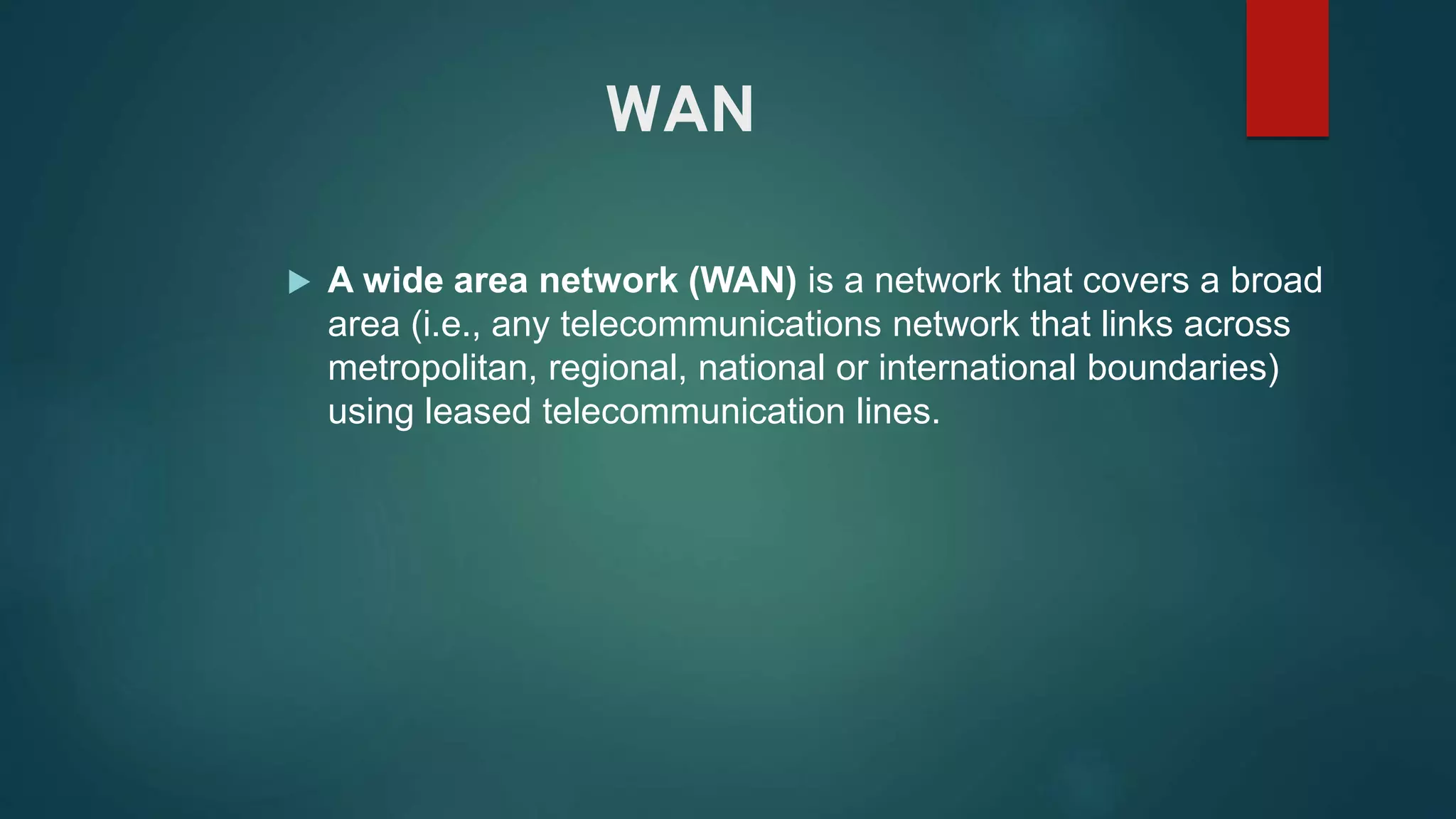This presentation introduces computer hardware and networking. It discusses the major elements of a computer system as hardware and software. Hardware includes all physical parts like the central processing unit (CPU), motherboard, memory, and cards. The CPU contains an arithmetic logic unit and control unit. Networking is classified into personal, local, metropolitan, and wide area networks based on the range and area covered. Any questions about computer hardware components or networking types are welcome.


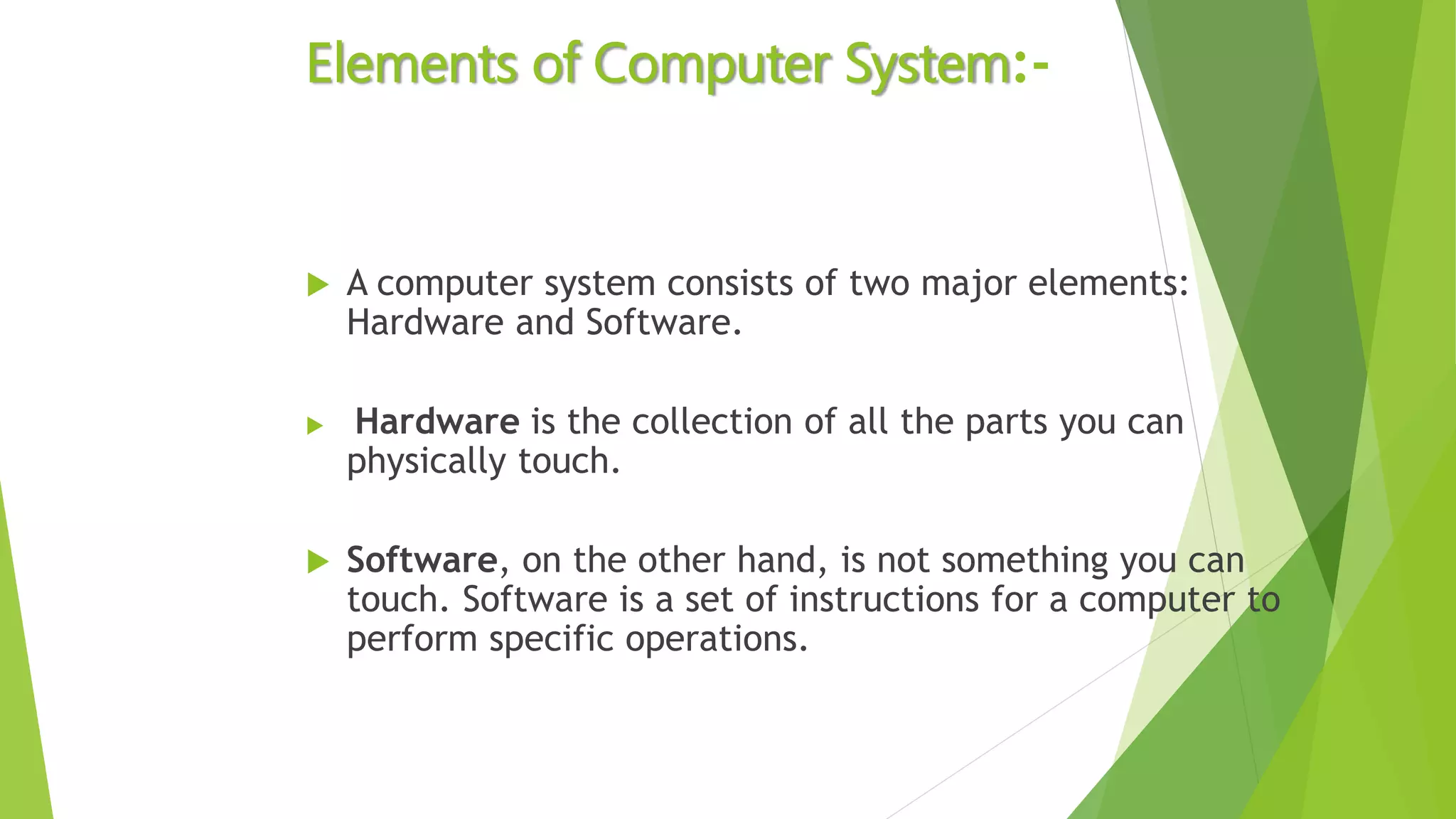
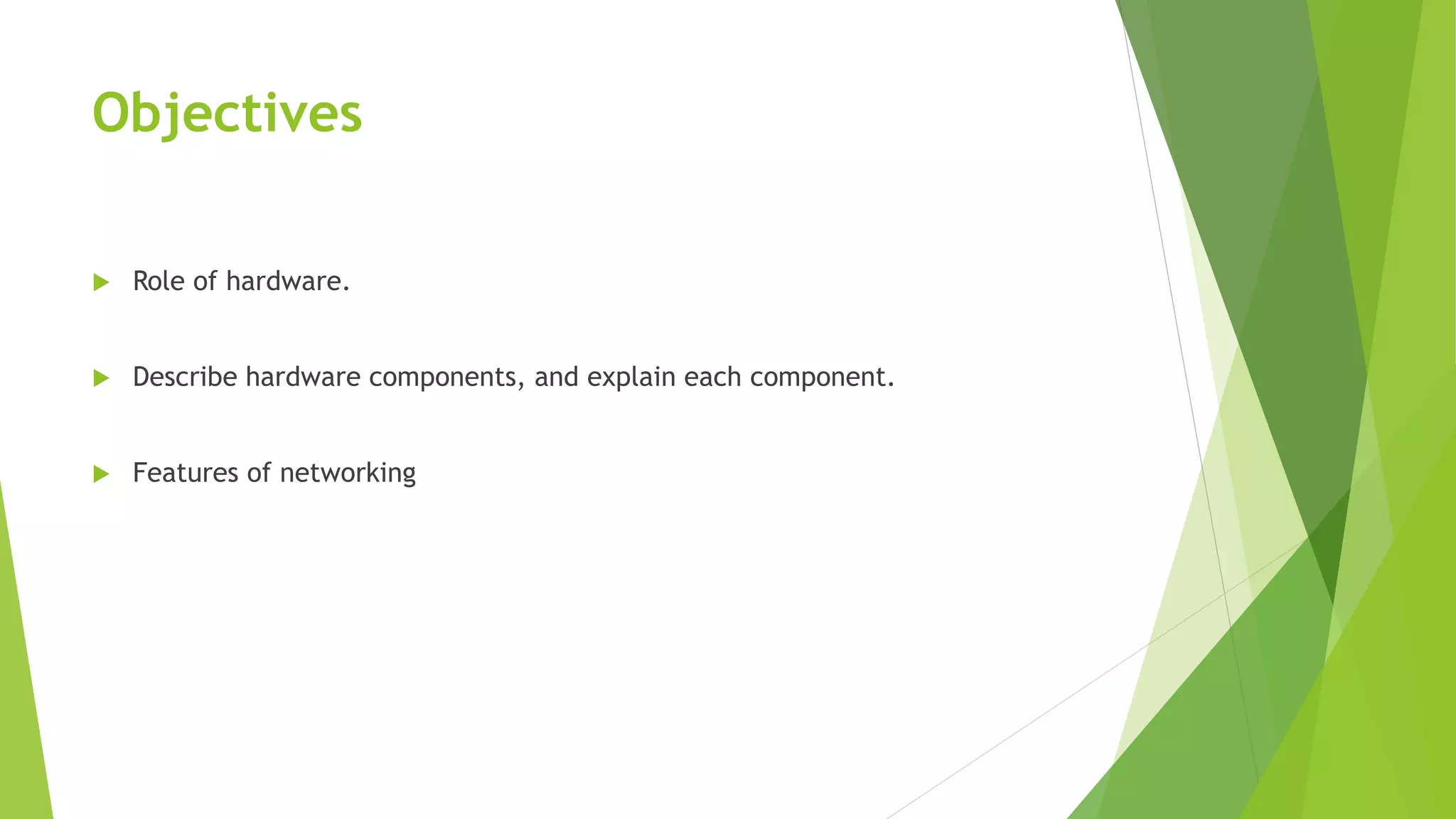
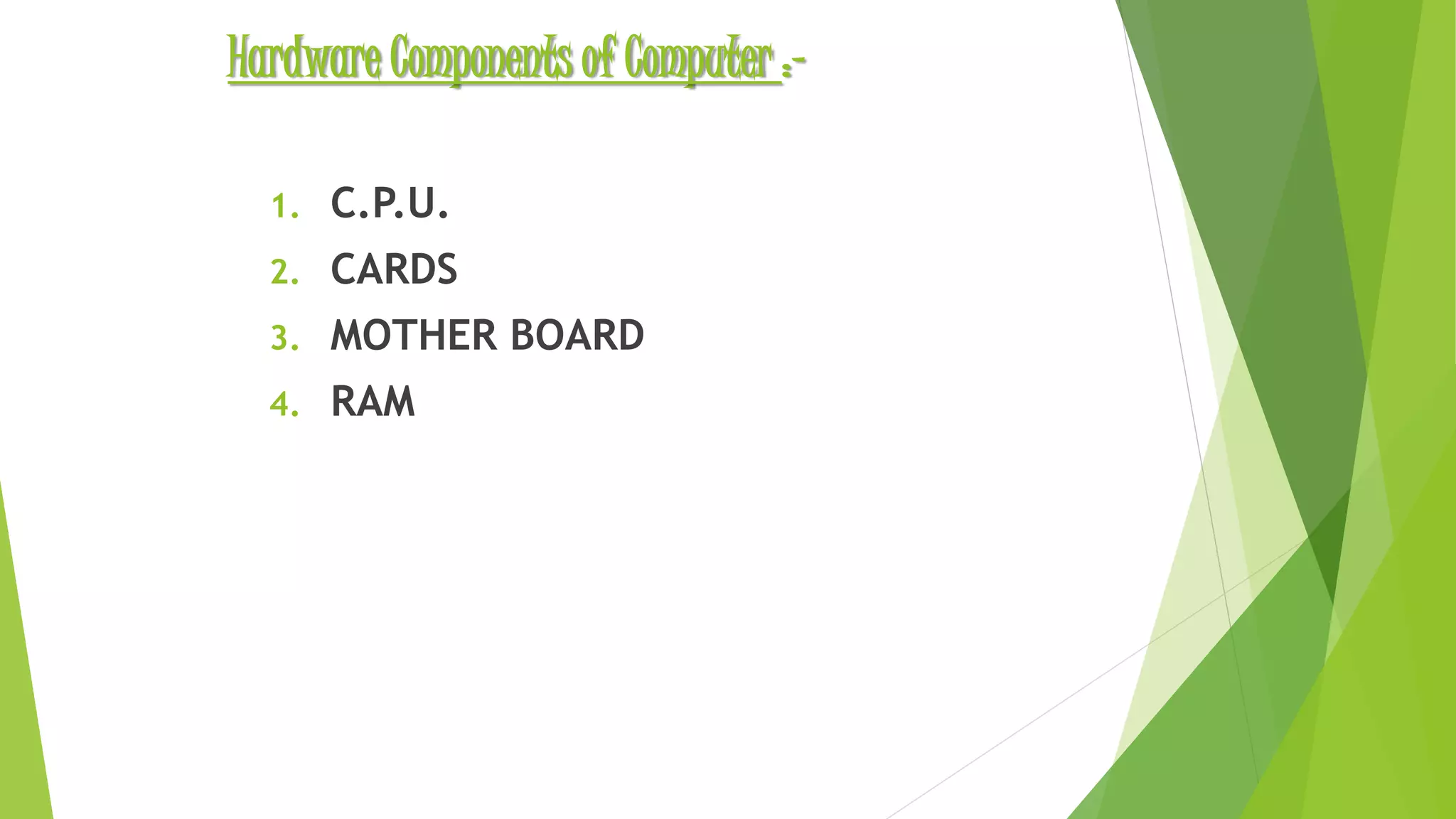
![CENTRAL PROCESSING UNIT (CPU)
1. Arithmetic Logic Unit- [ALU] = ALU performs arithmetic logical operations.
2. Control Unit- [cu] = CU extracts instructions from memory and decodes and
executes them, calling the ALU when necessary.
Component of CPU :](https://image.slidesharecdn.com/computerhardwareandnetworking-150413114534-conversion-gate01/75/Computer-hardware-and-networking-6-2048.jpg)

